Ini adalah radio portable dengan 11 band termasuk FM berfunsi dengan baik dengan menggunakan daya 1.5V x 9 baterai. Untuk penanda dunia atau tutup atas hilang tetapi tidak mengurangi fungsi dari radio ini
Dijual Dengan Harga Rp. 1.250.000,- belum termasuk biaya pengiriman.
The Zenith "TRANS-OCEANIC"
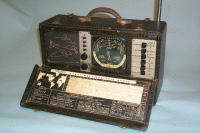
by Konrad J.Birkner, Haag/OBB/Germany.
Shortwave Broadcasting in the 1930s.
In the late thirties shortwave broadcasting was well established. Nearly every country used shortwave radio to supply colonies and emigrants with news and entertainment programmes from the homeland. On the other hand the reception capabilities were rather limited. True SW-receivers requiring a skilled operator were hardly found apart from a hams shack. The average listener/radio owner found on the dial of his expensive radio receiver usually one single SW band without any bandspread or fine tuning capability. Accurate tracing/frequency logging was practically impossible. Only a few top-of-the-line sets offered several spread bands plus sufficient sensitivity, selectivity, image suppression, automatic gain control, and so on.
Portable radios had, if any, one single SW band, where without bandspread the stations indistinguishably crowded the tiny dial.
In Germany BRAUN started in 1936 to employ a SW band for a portable. In 1939 already BLAUPUNKT, KÖRTING, NORA, and RADIONE had portables with SW on offer. Those portables never became popular of course, since the user had to carry a total weight inclusive batteries of 10 to 20 kilograms! So far for Germany.
The situation was similar for other industrial nations, even the United States, although there radio was very popular, and the radio industry was a leading one, in technology as well as on the market. There had certainly been people feeling the lack of suitable SW portables regrettable. But they were too few to create a new market. They were mainly members of expeditions in the USA, people exploring the endless space of Canada or the polar region.
There was one fortunate circumstance to advance the development of mobile shortwave receivers: based on his commercial interest as well as on his personal concern there was a man who could help. It was Commander Eugene F.McDonald, president of the ZENITH radio works.
Evolution of ZENITH
E.F.McDonald was a very successful businessman. He had made a fortune already as a young man. At age 25, in 1911 ,he made 16 000 $ in one year! Then he made automotive history in 1912, when he organised a finance company to sell cars on credit, which was new for cars. Cars were for the rich, and rich people payed cash (those days). Anyway, he earned not less than one million a year. In 1921 he became partner and General Manager of a small radio manufacturing business run by two young men. They assembled one set per day and sold it for 200 S. The small company was soon deluged with orders. The product name was ZENITH. Most important was: they held one of the scarce Armstrong licenses, viz.they could use reaction for their circuitry. Such licenses were not available at that time.
Later the name changed to "Zenith Radio Corporation", and it flourished selling high quality products mainly to the american market.
Commander McDonald was still an excellent salesman. He persuaded in 1923 the polar explorer McMillan to take with him a ZENITH "Companion" (perhaps the worlds first portable radio) on his polar expedition, and in 1925 McMillan was equipped with a SW transmitter and receiver by ZENITH. It was a full success. For the first time such an expedition had a permanent communication link with their home. The opposite station was WJAZ, Zeniths own radio station. Such a successful operation was of course of great publicity value.
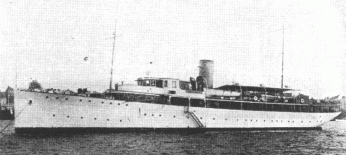
McDonald often traveled on his 184ft yacht "Mizpah" (one of the largest on the Great Lakes) even to remote locations. At one of these occasions he complained from his Canadian fishermans hut he could not get any reasonable radio reception. So he commanded his lab August 2nd, 1939 to develop a radio to his specification. Subsequently ca. twenty prototypes were built. He tested and rejected all of them. In July 1941 eventually two units found his agreement. One was handed over to a.m. polar explorer McMillan, while McDonald took the other one to Canada. McMillan informed McDonald that never before he experienced such a good contact to the world from the arctic but with this radio. Not only weather stations could be watched, but also the latest news directly from Europe, in particular those from and about Germany. McDonald released the design for production, which started in October 1941. First deliveries were made in early January 1942.
The first "TRANS-OCEANIC" #7G605
The ancestor of the T.O.s was model 7G605. It offered a number of technical features: for SW operation a choice of Antennas was available like an extention rod, then a tuned SW frame, the "Shortwave Magnet", and finally the supplementary "Wave Booster" for "supersensitive" SW reception.
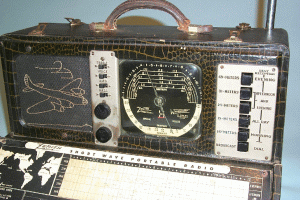
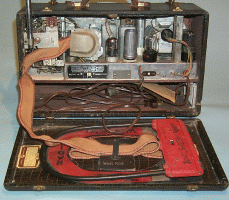
For the BC band a built in frame antenna or alternatively the BC (broadcast) Wave Magnet could be used. Both the SW-and the BC- Wave Magnet were detachable and would be used remote from the receiver e.g. fixed to the window glass of a railway compartment.
Besides BC there were five spread SW bands: 49m, 31m, 25m, 19m, 16m. Long Wave, very popular in Europe, was not provided. lt never played a role in North America.
The circuitry of the 7G605 employed six tubes plus rectifier (for mains operation). In BC there is a tuned RF stage (three gang capacitor) which is inactive in the SW bands! ln SW the RF circuits are centretuned and bandspread is caused by the fixed capacitors C8=75pF and C9=50pF. According to the confined stations allocation the bands were chosen pretty narrow (6.0-6.5 MHz, 9.4-9.8 MHz, 11.7 -11.9 MHz, 15.1-15.3 MHz, 17.6-18.0 MHz). This allowed, together with low Q figures, to refrain from RF circuit tuning without noticeable loss of sensitivity. Possible gain of three to five from the RF stage was also waived (saving a complete set of switchable coils for the mixer input). Such a circuitry was abandoned for all later models, where wider bands and an RF stage for SW now required three gang tuning to cover all RF circuits. Let alone the output tube the relative new Loctal tubes for 1.5v "A" supply came into application. They required much less
For experts here the tube layout: lLN5 = RF stage(BC only), 1LA6 = Mixer, 1LE3 = Local Oscillator, this was forced by the 1LAB which did not reliably oscillate at SW frequencies (the successor 1LC6 solved that problem), 1LN5 = IF stage 455kHz, 1LD5 = Demodulator+1st Audio, and 3Q5 = output tube (Octal base). Elder amateurs may remember such types from salvaging US wireless sets after WW2. To save expensive battery life a 117v ac power supply was integrated, using a 117Z6G rectifier.
Another typical feature was the "Radioorgan". Four little slide switches allowed 16 different sound combinations. This was obviously so successful that it was continued in all following models.
Sailboat and Bomber
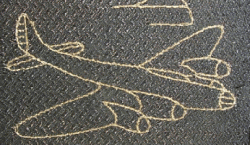
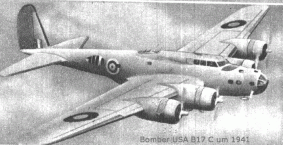
The first production runs had a sailboat sketch on the speaker grille cloth. Probably in consequence of Pearl Harbour Dec.7.1941 later models (the majority) got a bomber to display. To me it resembles strongly a B-17.
The first post war model #8G005
After WW2 a new model (8G005) entered the market in 1946. Not only sensitivity and selectivity and tone quality were improved ,but also the case was completely redesigned. Its general appearance was maintained more or less for sixteen years. After all the 8G005 sold nevertheless 130,000 times from 1946 to 1949.
The technical layout of a superhet employing an RF stage was now applied not only to the BC band but to all five SW bands as well. Although miniature tubes were available since 1940, a tube layout of Loctal tubes was favoured. To improve output power and tone quality a push pull amplifier was installed using a pair of 1LB4,increasing the total number of tubes to eight, rectifier included.
Miniature tubes for the G500
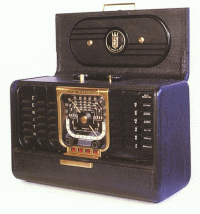
Eventually in 1949 the new miniature tubes came into action.The new model G500 owned only five tubes: the push pull was abandoned and a dry plate rectifier replaced the tube. Lesser tubes would increase battery life. The outward appearance of its predecessor - fold away lid, circular dial with double pointer, push button band switch, radio organ - was practically taken over. Even the expert better opens the rear panel to distinguish. The tube layout now embraced 1U4, 1L6, 1U4, 1U5, 3V4. Let alone the 1L6 all other tubes have european equivalents. The german periodical "Funktechnik" in 1951 published an article containing a short technical description and the schematic diagram. Unfortunately this schematic bears a fatal error: A and B supply at the battery plug are interchanged with each other!
Until the rise of its successor in 1951 ca 90,000 sets had been sold of the G500.
H 500 - the most popular one
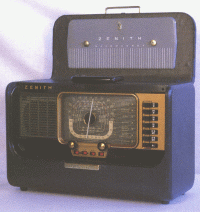 This model is certainly the best known and most famous one, and surely almost every radio collector encountered it sometimes somewhere. lt is rather widespread in Europe. The spread 49m band was omitted and two wider bands added, 2 to 4 MHz and 4 to 8 MHz which made a total of seven bands available. The reason behind this was mainly that the B-band medium wave (3 to 5 MHz) was demanded by Americans being stationed in the tropics as well as from yachtsmen wanting to watch weather and radio navigation stations at frequencies around 2 MHz, 3 MHz, and 7 MHz.
This model is certainly the best known and most famous one, and surely almost every radio collector encountered it sometimes somewhere. lt is rather widespread in Europe. The spread 49m band was omitted and two wider bands added, 2 to 4 MHz and 4 to 8 MHz which made a total of seven bands available. The reason behind this was mainly that the B-band medium wave (3 to 5 MHz) was demanded by Americans being stationed in the tropics as well as from yachtsmen wanting to watch weather and radio navigation stations at frequencies around 2 MHz, 3 MHz, and 7 MHz.When opened the front lid shows the detachable Wavemagnet for medium wave ( BC ). The H500 became a real hit amongst yachtsmen. 245,000 units were sold from 1951 to 1954.
600 Series,the last tube model
In 1954 started the last model using vacuum tubes, the 600 series which
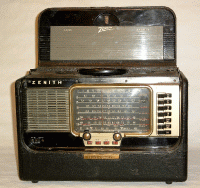 continued in several variants till 1962. Most obvious feature is the straight horizontal dial in place of the circular one with its double ended pointer. Furthermore a ballast tube (series regulator)was introduced to overcome problems in mains operation. The problem consisted in power dependent frequency shift or even oscillator drop out (which was no problem in battery operation). More than 269,000 units have been sold till 1962.
continued in several variants till 1962. Most obvious feature is the straight horizontal dial in place of the circular one with its double ended pointer. Furthermore a ballast tube (series regulator)was introduced to overcome problems in mains operation. The problem consisted in power dependent frequency shift or even oscillator drop out (which was no problem in battery operation). More than 269,000 units have been sold till 1962.The competitor Hallicrafters was obviously so enthusiastic about the H 500 /Series 600 models (and of course to have a share in that market) that they practically completely took over the T.O.design concept for their "World-Wide Dynamic Tuner". Identical tube layout ,same frequency bands, equal case concept. Even the "Radioorgan" must not be left out! Only a Long Wave band was added for navigational needs. The linear dial is extended across the full front, and the radio itself appears less American since more stable and solid than the original.
ROYAL 1000 - with Transistors
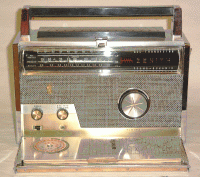
In the meantime transistors became available and raised the desire to use them for portable radios. The ROYAL 1000 was the first fully transistorised T.O. which entered the market in 1957. It was all but cheap costing 275$ (equivalent to ca 1400$ today !)while the contemporary tube model of the 600 series was only 140$. The 13m band was added, later even Long Wave. In spite of the high price it sold l65,000 times. It should be noted that the transistors had sockets and the chassis was handwired.
ROYAL 3000 - with FM and ROYAL 7000
The successor ROYAL 3000 was equipped with FM band. It sold 83,000 times from 1963 to 1971.
In 1969 the ROYAL 7000 entered the market, featuring a BFO and manual gain control for CW and SSB reception.
R 7000 - the decline of a legend
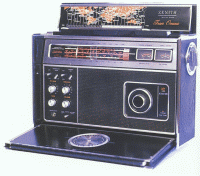 The last model was simply called R 7000, not to be mistaken with the ROYAL 7000! 0ther than its predecessors it got continuous band coverage from Long Wave up to VHF, and a mechanical slow motion gear to ease tuning. But only 25,000 units were manufactured which to some extent were assembled in Taiwan.
The last model was simply called R 7000, not to be mistaken with the ROYAL 7000! 0ther than its predecessors it got continuous band coverage from Long Wave up to VHF, and a mechanical slow motion gear to ease tuning. But only 25,000 units were manufactured which to some extent were assembled in Taiwan.The R 7000 could not catch up its competitors: Sony's equivalent priced ICF-2001 was the first world receiver for the consumers market which employed digital frequency synthesis using a microprocessor including digital frequency display and tuning input. The R 7000 had not even a digital frequency counter, while for GRUNDIG's Satellit series 1400/2400/3400 a digital counter for frequency display was a matter of course. So even European competitors were far ahead. Furthermore the SONY ICF 2001 had only half the volume and was of considerably less weight. Besides that there were automatic scanners available for VHF, and the citizen band had lost interest by the public. A legend had ended.
Hints for the collector
Notwithstanding the large production figures are Trans-Oceanics not too easy to find, and if so, they are not cheap. After all they represent the first portable World Receivers long before Grundigs SATELLIT (1965) or the Braun T-1000 could get a share.The line of tube type Trans-Oceanics did not have any comparable competitor. They became standard for products of other firms in the USA and in other countries.
This article quotes only the main points about TO´´s. The interested collector must not miss the excellent book "The Zenith Trans-Oceanic" by Bryant/Cones. Carefully researched,full of details, tables,notes and equipped with brillant color photos it is really a titbit. Regrettably it does not supply any circuit diagram. But as a basic documentation: There isn't anything better on this matter!
References:
(1) Bryant,John H. and Cones,Harold N.: The Zenith Trans-Oceanic; 160 pages; Schiffer Publishing,Atglen(USA)1995
(2)Funktechnik (1951) Nr.11, p.306
Thanks
to H.M.Knoll for his valuable help to reissue this article and to Prof.Dr.O.Künzel for supplying photos. Other photos from authors collection. The B-17 Bomber photo was found and contributed by H.M.Knoll. power than the european K-series for 2volts.
This article was edited 26.Dec.06 11:01 by Konrad Birkner .(copy/paste from Zenith Radio corp)




Tidak ada komentar:
Posting Komentar